Snøhetta to build Shanghai Grand Opera House with spiral staircase roof
Snøhetta has revealed visuals for a major new opera house in Shanghai, featuring a spiralling stepped roof that will connect the upper levels of the building with a riverside plaza.
The architecture and design firm, which was founded in Norway, teamed up with Chinese studio ECADI on its competition-winning design for the Shanghai Grand Opera House.
Set to be built beside the Huangpu River, it is expected to provide a major new cultural landmark for the biggest city in China.

The building's most prominent feature will be a helical roof that connects to the ground via a spectacular open-air spiral staircase. Snøhetta has designed this to resemble an unfolding fan, evoking "the dynamism of dance and the human body".
The building is reminiscent of the Oslo Opera House completed by the firm in 2008, which also featured a publicly accessible roof that slopes down to meet the waterfront.
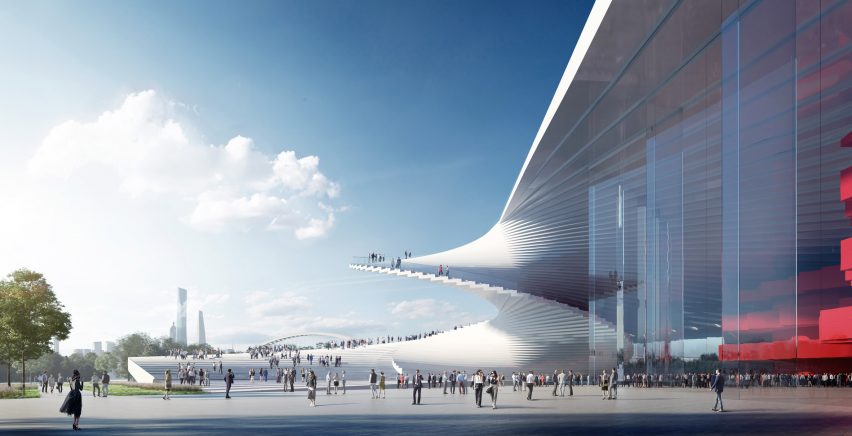
"The Shanghai Grand Opera House is a natural progression of our previous work with designing performing arts centres," explained Snøhetta co-founder Kjetil Trædal Thorsen, referencing the studio's work on similar projects including the one in Oslo,
and Busan Opera House in South Korea.
He added that the project "is a product of our contextual understanding and values, designed to promote public ownership of the building for the people of Shanghai and beyond."
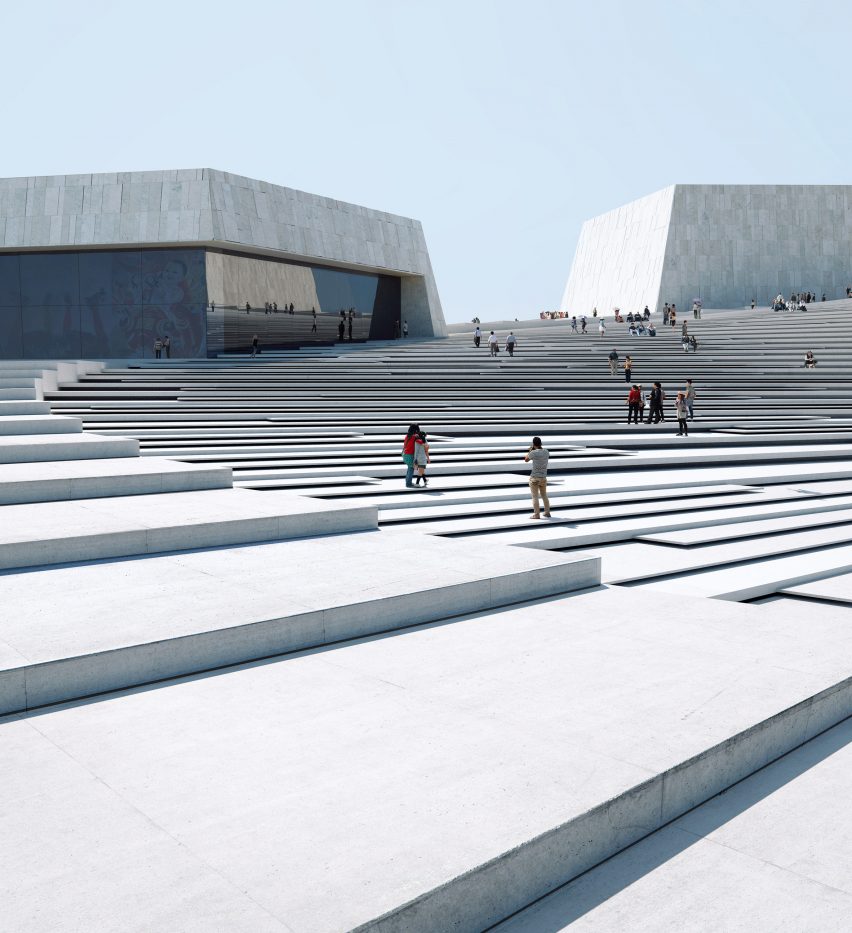
The roof will link to a large stepped plaza, allowing it to double as a public meeting place and a stage for large-scale events.
Open for visitor access 24 hours a day, the plaza will also create a link to the riverfront.
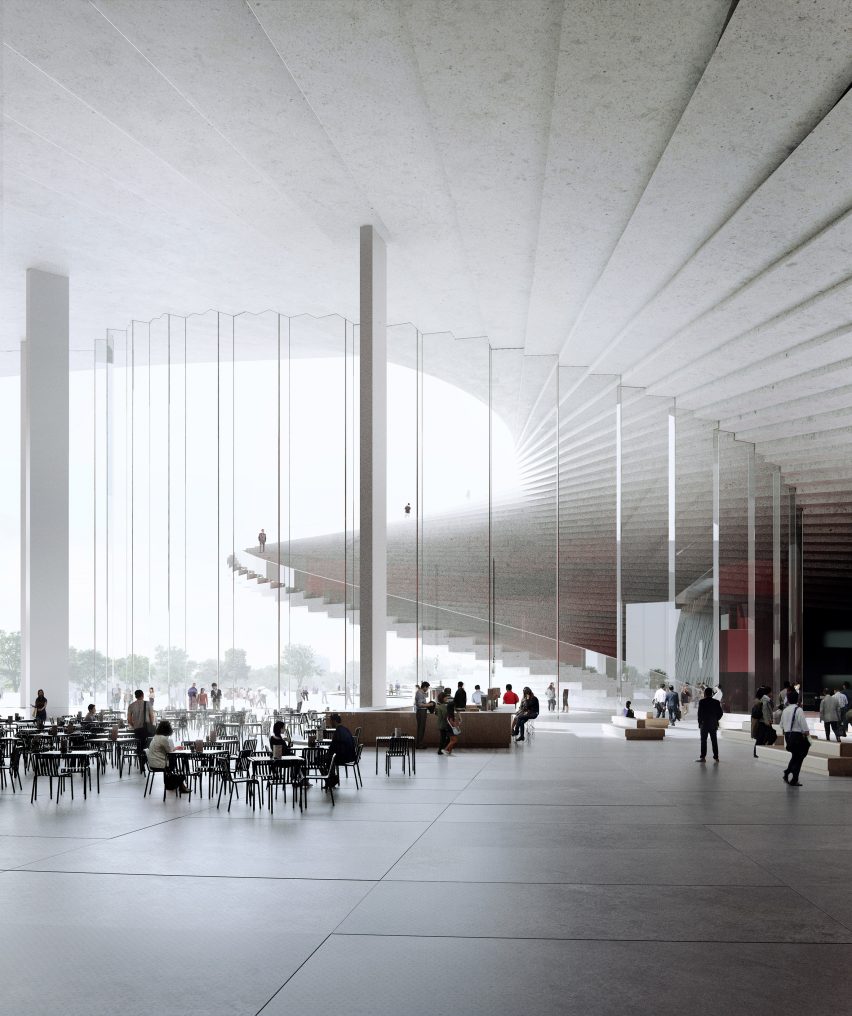
At the core of the building will be a 2,000-seat auditorium, for which Snøhetta is developing "state-of-the-art technical solutions and superior acoustics".
It will sit alongside a 1,200-seat stage, which offers a setting for smaller productions, while a third auditorium with 1,000 seats will host a flexible stage and seating arrangement for more experimental performances.
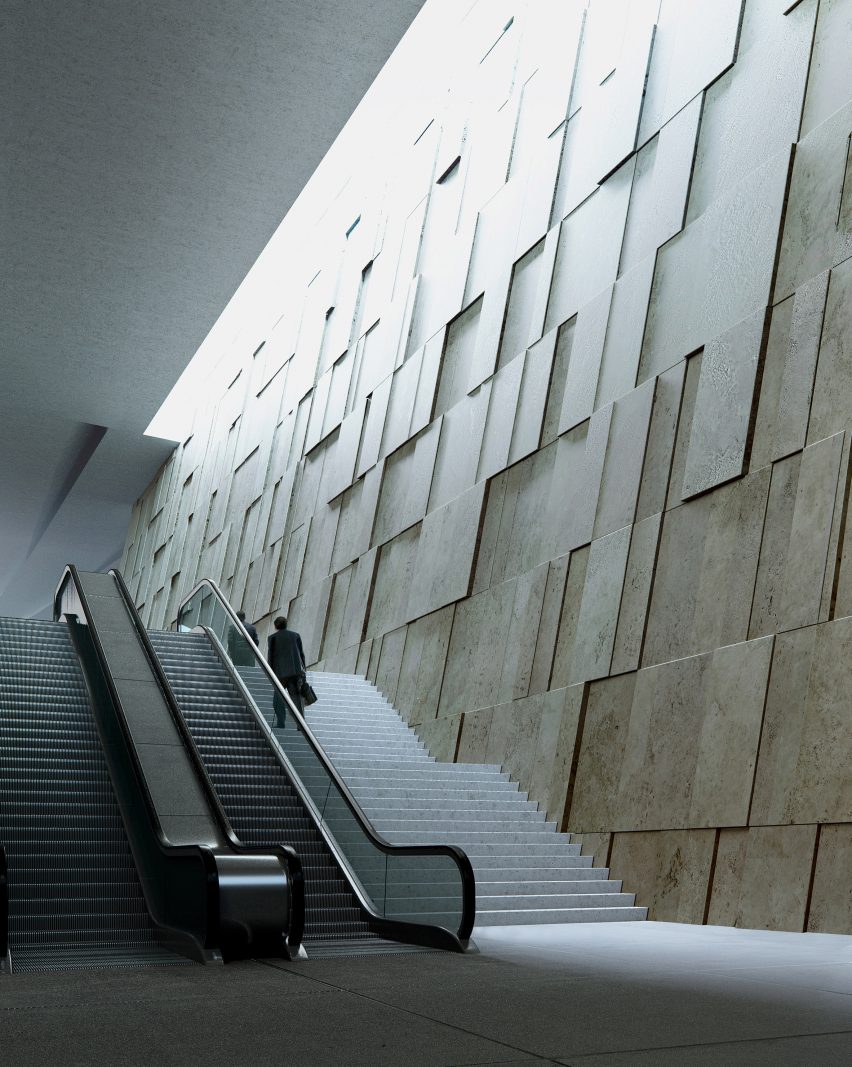
The spiralling motifs seen on the exterior of the opera house will extend into the interiors of the building, and feature in its visual identity, which Snøhetta has also designed to reference an open fan.
Interior finishes will be developed to contrast the building's white exterior, combining soft silks with oak wood floors to support the acoustics.
In the foyer, the oak will be stained red, while expansive glass panes will bring in natural light and "transform the experience of the building throughout the day and from season to season".
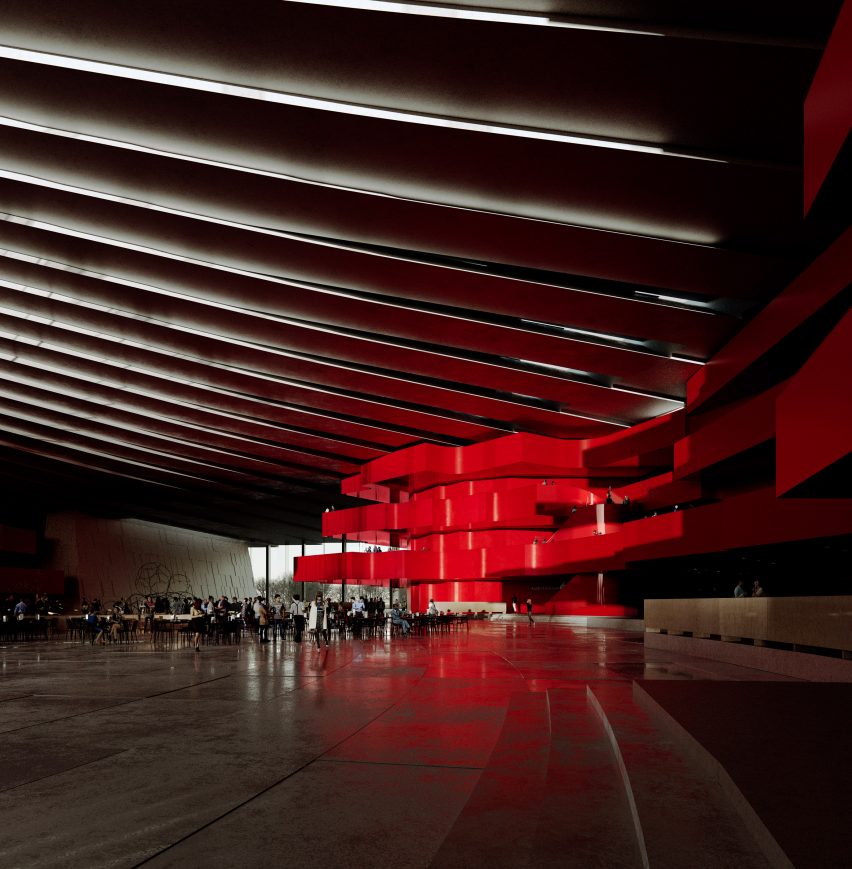
"The Shanghai Grand Opera House will be a world-class venue, placing the visitor at the centre of the stage," said the studio.
"Through its aesthetics, functionality, as well as its cultural and ecological ambition, the opera house will be an accessible canvas for global visitors, local citizens, and artists to fill with life and culture."

The building will be constructed at Expo Houtan, a waterfront district that was part of the site for Shanghai Expo 2010. The project was identified as a priority in China's 13th Five-Year Plan, which set out the country's economic and social development goals between 2016 and 2020.
Snøhetta was founded in 1989 by Norwegian architect Kjetil Trædal Thorsen and American architect Craig Dykers. Other waterside buildings designed by the studio include a hotel proposed for the Lofoten archipelago and Europe's first underwater restaurant.